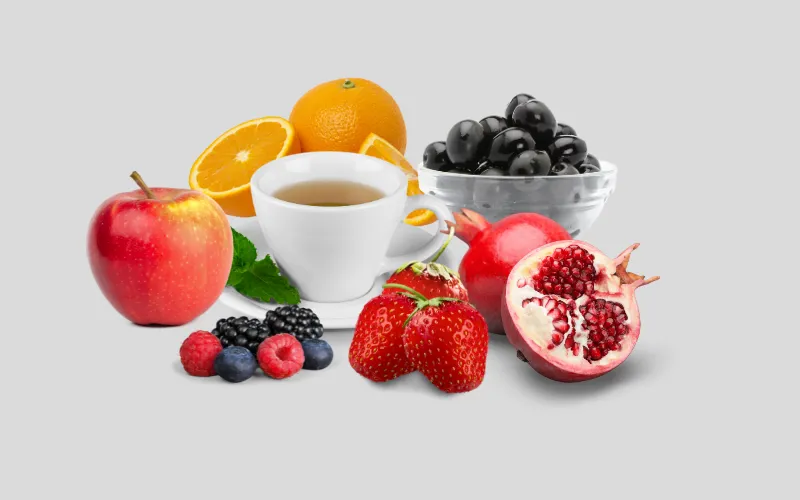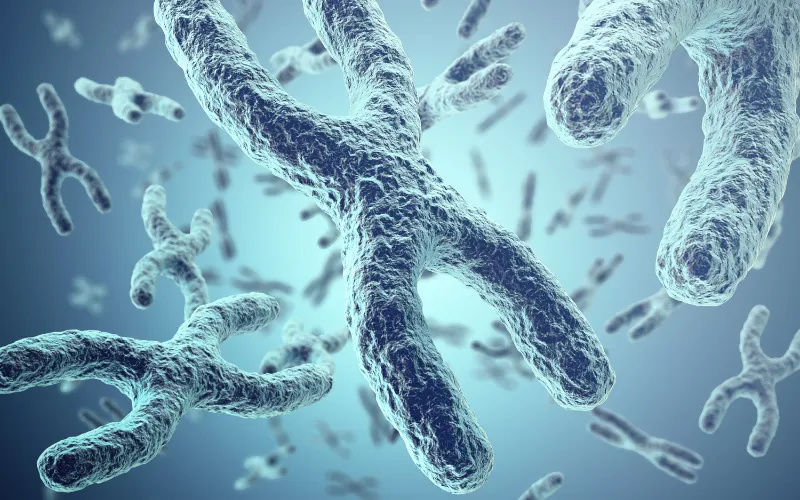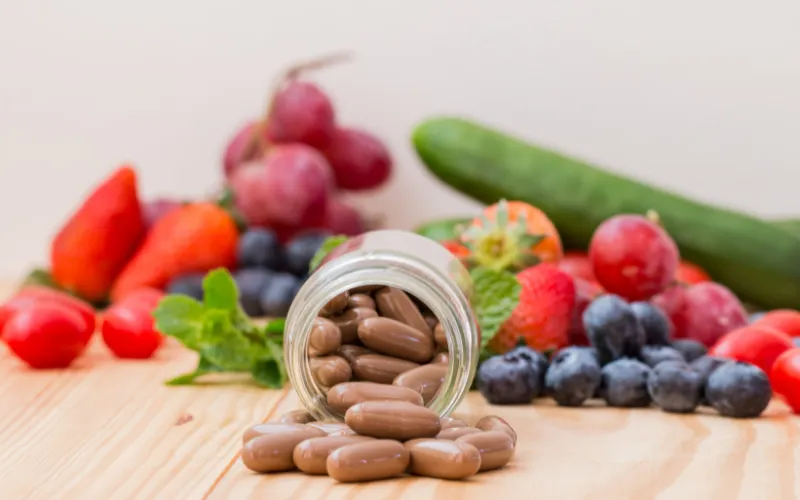
What if your daily diet could rewrite the way your genes perform? Polyphenols, the bioactive compounds found in foods like berries, green tea, coffee, and dark chocolate, are now recognized as more than antioxidant agents. They act as molecular messengers, directly influencing polyphenols gene expression: the biological code that governs inflammation, metabolism, and even disease resistance.
This emerging science of polyphenols gene expression reveals how nutrients can function as genomic “switches,” turning pathways on or off in ways that impact everything from cardiovascular health to neuroprotection. Instead of simply fueling the body, polyphenols engage with DNA, epigenetic markers, and cellular signaling systems giving practitioners a new dimension in personalized nutrition.
The question is no longer just what nutrients provide, but how they instruct our genes to behave. By examining how polyphenols regulate gene activity, practitioners can uncover actionable strategies for tailoring diets, optimizing interventions, and advancing the practice of nutrigenomics.
Key Takeaways
Polyphenols influence gene expression by acting as molecular switches, regulating inflammation, metabolism, and cell repair processes at the genetic level.
Epigenetics and signal pathways play a critical role, with polyphenols modifying DNA methylation and activating pathways like Nrf2 to promote antioxidant defenses and NF-κB to control inflammation.
Dietary polyphenols, such as those in berries, tea, and dark chocolate, rely on bioavailability and your gut microbiome to be metabolized effectively, highlighting the importance of a balanced diet and gut health.
Personalized nutrition strategies leveraging genetic insights (e.g., SNPs like APOE and COMT) enable practitioners to tailor polyphenol-rich diets for better health outcomes.
Common challenges like bioavailability and individual variation emphasize the need for precision when incorporating polyphenols into diets, using whole foods, synergistic combinations, and proper supplementation.
Polyphenols show potential in chronic disease management (e.g., cardiovascular health and neuroprotection), but practitioners should rely on quality human trials when translating research into clinical practice.
Table of Contents
How Polyphenols Influence Gene Expression
Polyphenols are dietary compounds that directly affect genetic activity, influencing pathways tied to inflammation, metabolism, oxidative stress, and cellular repair. The study of dietary polyphenols effects has revealed that their role extends far beyond antioxidant protection: they actively shape how genes function. Understanding the gene influence polyphenols exert is essential for practitioners applying nutrigenomics in clinical care.
Mechanisms of Action
Polyphenols regulate gene expression through multiple mechanisms that represent the foundation of nutrition polyphenol interaction:
Epigenetic Regulation
Epigenetic modifications, as seen in how polyphenols modify DNA methylation and histone acetylation, effectively turning genes “on” or “off.” For example, EGCG from green tea can inhibit DNA methyltransferases, reactivating tumor-suppressor genes. Curcumin influences microRNA levels, reducing pro-inflammatory signaling and stabilizing immune responses.
Signal Transduction Pathways
Polyphenols interact with cell signaling networks such as:
Nrf2/ARE: activating antioxidant defenses
NF-κB: reducing inflammatory activity
PPARs: regulating lipid metabolism
Through these nutrient-gent interactions, polyphenols act as modulators of metabolic and immune processes, altering outcomes at the genomic level.
Dose, Bioavailability, and Individual Variation
The impact of polyphenols is highly context-dependent:
Bioavailability & Gut Microbiota
Polyphenols require microbial metabolism for activation. The gut microbiome converts raw polyphenol compounds into bioactive forms, making microbiota diversity a critical factor in therapeutic outcomes.Genetic Polymorphisms
Single nucleotide polymorphisms (SNPs) affect how individuals respond to polyphenols. Variants in genes linked to oxidative stress, inflammation, or lipid metabolism alter both sensitivity and efficacy.Limitations of Standard Doses
Responses to polyphenols vary with genetics, age, body composition, and dietary context. Fixed-dose recommendations rarely apply uniformly in practice, requiring individualized adjustments.
For practitioners, the key is recognizing that polyphenols function less as universal supplements and more as precision tools. By tailoring interventions to genetic and microbial contexts, polyphenols gene expression research becomes actionable in personalized nutrition for nutrigenomics.

Dietary Polyphenols Effects: Translating Research to Practice
Polyphenols are not just antioxidants. They directly influence gene activity, shaping pathways involved in inflammation, metabolism, cellular repair, and cognitive function. The growing body of evidence shows clear potential for clinical applications in nutrigenomics, where nutrition is tailored to genetic profiles.
Evidence from Peer-Reviewed Studies
Cardiovascular health: Flavonoids regulate endothelial nitric oxide synthase (eNOS), supporting vascular function and reducing cardiovascular risk.
Metabolic pathways: Resveratrol activates SIRT1, improving energy balance and promoting healthier metabolic outcomes.
Oncology: EGCG from green tea reactivates tumor-suppressor genes, contributing to cancer prevention strategies.
Neuroprotection: Curcumin increases brain-derived neurotrophic factor (BDNF), supporting cognition and reducing neurodegenerative risk.
These findings illustrate how polyphenols influence critical systems, providing mechanistic explanations for their clinical potential.
Clinical Relevance
The strength of evidence varies:
In vitro studies highlight mechanisms but lack human complexity.
Animal studies provide physiological insight but are not always translatable.
Human trials remain the gold standard, though sample sizes and genetic diversity can limit outcomes.
For practitioners, the challenge is filtering these findings into actionable strategies. Questions to ask: Was the dosage clinically relevant? Were genetic or dietary contexts considered? Do the dietary interventions align with patient-specific needs?
Applying to Practice
By integrating polyphenol research with nutrigenomic testing and biomarker tracking, practitioners can design precision-based nutrition plans.
Polyphenols are not generic wellness tools; they are clinical levers that, when applied with nutrigenomic insights, allow for individualized nutrition strategies that improve patient outcomes.
Clinical Applications of Polyphenols in Nutrigenomics
Polyphenols play a direct role in regulating gene expression, influencing pathways tied to inflammation, oxidative stress, metabolism, and neuroprotection. For practitioners, this makes them more than dietary compounds, they are active modulators of cellular function and central to clinical applications in nutrigenomics. By mapping polyphenols to genetic targets and applying these insights in patient care, practitioners can design more precise and effective nutrition strategies.
Key Food Sources and Gene Targets
Polyphenol | Food Sources | Primary Gene Targets | Clinical Implications |
|---|---|---|---|
Resveratrol | Grapes, red wine | SIRT1, p53 | Longevity, metabolic regulation |
EGCG | Green tea | NF-κB, Bcl-2 | Anti-inflammatory, apoptosis |
Curcumin | Turmeric | Nrf2, BDNF | Neuroprotection, antioxidant support |
Quercetin | Onions, apples | PPARs, COX-2 | Lipid metabolism, inflammation |
Each polyphenol interacts with specific genetic targets to produce measurable physiological outcomes. For example:
Resveratrol activates SIRT1 and influences mitochondrial function, linking it to longevity and improved metabolic regulation.
EGCG suppresses NF-κB signaling, reducing inflammation, while upregulating Bcl-2 to encourage apoptosis in abnormal cells.
Curcumin enhances antioxidant pathways through Nrf2 and promotes neuroplasticity via BDNF activation.
Quercetin modulates PPARs to improve lipid metabolism and downregulates COX-2 to reduce inflammation.
These mechanistic pathways highlight how food choices can act as direct genomic interventions.

Personalized Nutrition Strategies
Responses to polyphenols vary widely, shaped by genetic polymorphisms, gut microbiota composition, and metabolic status. To translate research into practice, clinicians can:
Incorporate genetic testing: Variants in genes such as COMT or APOE influence how patients respond to specific polyphenols. For instance, APOE variants may predict cardiovascular benefit from resveratrol, while COMT variants can determine stress regulation from EGCG.
Use biomarkers to track effectiveness: Inflammatory cytokines, oxidative stress markers, and lipid panels provide objective feedback on intervention success. Subtle adjustments based on these markers allow for precise tailoring.
Introduce interventions progressively: Rather than applying high doses at once, gradual integration of polyphenol-rich foods (or targeted supplementation) allows practitioners to monitor tolerance and outcomes.
Practical Considerations
When applying polyphenol interventions, several clinical factors must be considered:
Synergistic effects: Polyphenols often act more effectively when consumed as part of a dietary matrix. For example, pairing quercetin-rich apples with resveratrol-rich grapes may amplify benefits through complementary pathways.
Formulation differences: Whole foods provide cofactors that enhance absorption, while concentrated extracts or supplements may be appropriate for therapeutic targeting in cases such as neuroprotection or oncology support.
Potential interactions: Polyphenols can interfere with medication metabolism. Green tea catechins, for example, may affect anticoagulant activity, and high-dose curcumin can alter absorption of proton pump inhibitors.
Practical Framework for Applying Polyphenol Research in Clinical Care
To effectively translate polyphenol research into clinical outcomes, practitioners can follow these structured steps:
Identify patient-specific genetic markers (SNP testing):
Testing for polymorphisms in genes like COMT, APOE, or GST helps determine how patients metabolize and respond to polyphenols. This prevents generic recommendations and aligns nutrition strategies with each individual’s genomic profile.Assess baseline polyphenol intake through diet recall:
Before prescribing changes, evaluate how much and what types of polyphenols patients already consume. This prevents unnecessary supplementation and highlights dietary gaps where targeted interventions may be most effective.Prioritize whole food sources before supplements:
Whole foods provide polyphenols alongside fiber, vitamins, and cofactors that improve absorption and synergy. Supplements or concentrated extracts may be necessary in therapeutic cases (e.g., oncology support with EGCG), but food-first strategies reduce risk of over-supplementation.Consider formulation and bioavailability factors:
Some polyphenols, like curcumin, have poor absorption unless paired with enhancers (e.g., piperine). Practitioners should account for delivery form and combination strategies to maximize clinical efficacy.Monitor biomarkers regularly:
Use oxidative stress markers, inflammatory cytokines, lipid profiles, or cognitive function assessments to measure the effectiveness of interventions. Biomarker feedback allows for timely adjustments, ensuring interventions are evidence-based and patient-specific.Evaluate potential interactions with medications:
Green tea catechins can influence anticoagulants, while high-dose curcumin may interfere with drug metabolism. Reviewing patient medication lists ensures safety and avoids unintended effects.Educate patients on timing and food synergy:
Practical guidance, such as pairing polyphenols with fat for absorption or combining multiple polyphenol-rich foods, improves adherence and outcomes. Teaching patients how to build meals enhances both engagement and clinical effectiveness.Stay updated with evolving research:
Nutrigenomics education for healthcare professionals is a rapidly advancing field. Regularly reviewing emerging studies ensures clinical recommendations remain evidence-based and adaptable.
Conclusion: Advancing Practice with Integrative Genomics
Polyphenols show how nutrition and genetics intersect to shape health at the molecular level. For practitioners, the challenge is translating this science into precise, actionable care strategies that fit each patient’s genetic profile.
The Integrative Genomics Specialist Program by Elite Gene Labs is designed to help clinicians do exactly that. This advanced training equips you with the tools to interpret genetic data, apply nutrigenomic principles, and confidently integrate personalized nutrition into practice. If you’re ready to elevate your expertise and lead in the future of precision health, explore the program at Elite Gene Labs.
Frequently Asked Questions
What are polyphenols, and how do they affect gene expression?
Polyphenols are natural compounds in plant-based foods like berries, tea, and dark chocolate that influence how genes behave. They do this by modifying cellular signals and epigenetic markers, such as DNA methylation. This activity helps regulate inflammation, metabolism, and other vital body processes with medically sound precision.
Can polyphenols help reduce the risk of chronic diseases?
Polyphenols can’t cure diseases, but they may lower risks by reducing inflammation, supporting immune function, and improving metabolic parameters. Their effectiveness depends on bioavailability, gut microbiome health, and each person’s genetic makeup.
Which polyphenol-rich foods should I include in my diet?
Great sources include berries, green tea, dark chocolate, apples, nuts, turmeric, red wine (in moderation), and colorful vegetables like onions and spinach. A varied diet maximizes polyphenol diversity and benefit.
How does the gut microbiome influence polyphenol benefits?
The microbiome helps break polyphenols into more absorbable and active forms. A healthy gut boosts activation and utilization, increasing their effectiveness in regulating gene expression.
Do all individuals respond similarly to polyphenols?
No. Results vary by genetics, gut microbiota, age, and metabolism. Personalized approaches such as evaluating genetics and gut health yield better outcomes.
Are there safety concerns or risks with high polyphenol intake?
Excessive polyphenol intake may cause digestive discomfort or interact with medications. While whole foods are safe, supplements should be used with care and professional guidance.
How do polyphenols affect gene activity without changing DNA itself?
Polyphenols influence gene behavior through epigenetic mechanisms altering DNA methylation, histone structure, and microRNA expression. These changes modify gene activity without altering the DNA sequence.
How can clinicians integrate polyphenol insights into dietary plans?
Clinicians should assess patients’ genetics and preferences, emphasize whole-food sources first, monitor biomarkers (like inflammation and metabolism), and personalize recommendations based on responses and emerging evidence.
Do polyphenol supplements work as well as foods?
Whole foods offer broader nutrition and absorption compared to supplements. Supplements can be considered when dietary intake is insufficient, but they should be used under healthcare supervision.
What’s the latest research showing about polyphenols and gene regulation?
Current studies highlight that polyphenols like EGCG, resveratrol, and curcumin can modulate gene regulators (e.g., NF-κB, SIRT1) and epigenetic markers in human clinical settings, showing real potential for applications in precision nutrition and health care.
References:
Cory, H., Passarelli, S., Szeto, J., Tamez, M., & Mattei, J. (2018). The role of polyphenols in human health and food systems: A mini-review. Frontiers in Nutrition, 5, 87. https://www.frontiersin.org/journals/nutrition/articles/10.3389/fnut.2018.00087/full
Zeb, F., Naqeeb, H., Osaili, T., Faris, M. E., Cheikh Ismail, L., Obaid, R. S., Naja, F., Radwan, H., Hasan, H., Hashim, M., AlBlooshi, S., & Alam, I. (2024). Molecular crosstalk between polyphenols and gut microbiota in cancer prevention. Nutrition Research, 124, 21–42. https://www.sciencedirect.com/science/article/abs/pii/S0271531724000149
Cardona, F., Andrés-Lacueva, C., Tulipani, S., Tinahones, F. J., & Queipo-Ortuño, M. I. (2013). Benefits of polyphenols on gut microbiota and implications in human health. The Journal of Nutritional Biochemistry, 24(8), 1415–1422. https://www.sciencedirect.com/science/article/pii/S0955286313000946
Ozdal, T., Sela, D. A., Xiao, J., Boyacioglu, D., Chen, F., & Capanoglu, E. (2016). The reciprocal interactions between polyphenols and gut microbiota and effects on bioaccessibility. Nutrients, 8(2), 78. https://www.mdpi.com/2072-6643/8/2/78
Gowd, V., Karim, N., Shishir, M. R. I., Xie, L., & Chen, W. (2019). Dietary polyphenols to combat the metabolic diseases via altering gut microbiota. Trends in Food Science & Technology, 93, 81–93. https://www.sciencedirect.com/science/article/abs/pii/S0924224419302560
Hashim, N. T., Babiker, R., Rahman, M. M., Mohamed, R., Priya, S. P., Chaitanya, N. C., Islam, M. S., & Gobara, B. (2023). Natural bioactive compounds in the management of periodontal diseases: A comprehensive review. Molecules, 28(8), 3446. https://www.mdpi.com/1420-3049/28/8/3446
Santino, A., Scarano, A., De Santis, S., De Benedictis, M., Giovinazzo, G., & Chieppa, M. (2017). Gut microbiota modulation and anti-inflammatory properties of dietary polyphenols in IBD: New and consolidated perspectives. Current Pharmaceutical Design, 23(16), 2344–2351. https://www.eurekaselect.com/article/81598

